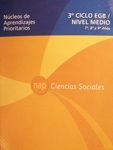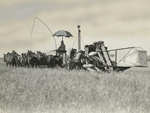"Globalization" is a term that educators often overuse. Perhaps influenced by books such as Thomas Friedman's The World is Flat and Franklin Foer's How Soccer Explains the World, the term gained attention in the late 1990s. A more globalized curriculum opened new possibilities for U.S. historians and educators, but suggestions on how to implement such an approach were often vague and muddled.
Between 1997 and 2000, the Organization of American Historians and the New York University Project on Internationalizing the Study of American History organized the Pietra Conference to address globalization in history education. The basic premise of this project was to move beyond a treatment of the nation as "self-contained and undifferentiated." If educators could reassess the interrelated aspects of historical events, transnational themes could become a far more integral part of U.S. history courses. Emphasis, then, could shift towards the varying contexts and scales of experience in U.S. history. Students exploring British America, for example, can view the 13 colonies within the context of empires and the Atlantic World. Native Americans in the West could be studied in relation to other indigenous groups of the Pacific Rim. Likewise, the American Revolution could be analyzed as the initiating event of a global system of democratic revolutions—especially influential in the hemispheric context. The New Deal, for its part, could be presented as one example of a transnational age of social politics.
Sounds interesting, right? Although some international contextualization has seeped into the U.S. history curriculum at the collegiate and secondary school level, the story of the United States remains rather insulated from the larger world. Moreover, U.S. educators rarely take advantage of digital communication tools, like Skype, in order to conference with other teachers around the world concerning the various ways that history courses are taught in global classrooms.
Taking advantage of research travel that took me to South America, I interviewed the social studies curriculum specialist at the Argentine Ministry of Education in Buenos Aires. Addressing a variety of topics—technology, national standards, revisions and changes in social studies curriculum, and thematic instruction—Mabel Scaltritti provided an insightful look into the national educational system and what U.S. and Argentine social studies educators can learn from each other.
On the structure of Argentina's social studies curriculum
Every year, history, geography, and human activities (sociology, economics, law) are taught in social studies. Grade levels are grouped in three-year cycles, where each one builds on the previous one. The first cycle (grades 13) introduces basic social studies themes. Units are thematic in nature, covering ideas and traditions like migration and "carnival" for example. The second cycle (grades 46) focuses on the intertwined relationships between economics, politics, history, sociology, and other areas of the humanities. Students analyze specific historical moments for their complexity, and are expected to demonstrate an awareness of how various factors shape the past. The third cycle (grades 79) delves deeply into an array of topics and focuses on multiple interpretations of historical events, such as Fascism, Nazism, the French Revolution, the Great Depression, Peronism, Keynesian economics, and the Cold War, to name a few. In the last years of high school, students choose from a variety of specialized courses on modern history (20th century) and current events.
On national, provincial, and city school systems
Much like in the U.S., curriculum initiatives that originate at the federal level are secondary to state/provincial and local directives. As such, a student in a remote area like Jujuy (near Bolivia) would have historically learned a different curriculum than another student in Buenos Aires. In 2003, President Nestor Kirchner began a process to homogenize education under national standards known as NAPs (Núcleos de Aprendizaje Prioritarios, grouped in the aforementioned three-year cycles). (The last years of high school are absent from NAP standards because of their college-prep and vocational nature.) According to Scaltritti, adherence to NAP standards in social studies is largely determined by the emphasis local administrators place upon them. As a result, Argentine university professors in the humanities complain about the declining quality of high school graduates, many of whom lack sufficient historical thinking skills and basic knowledge about civics, laws, and past events.
On local teaching versus national expectations
 Despite the effort to streamline curriculum on a national level, the teaching of history remains text-heavy and largely frames the past in patriotic and positivist terms. Scaltritti believes that Argentine educators should instead focus on an approach to history that emphasizes the complexity of human relationships through an understanding of economic systems, communities, and the role of geography. In other words, less teaching of an idyllic and homogenized version of the past and more heterogeneity in the history curriculum. The lack of material resources and qualified faculty, coupled with varying interests and timetables by local school administrators, makes a national reform initiative almost impossible in the social studies.
Despite the effort to streamline curriculum on a national level, the teaching of history remains text-heavy and largely frames the past in patriotic and positivist terms. Scaltritti believes that Argentine educators should instead focus on an approach to history that emphasizes the complexity of human relationships through an understanding of economic systems, communities, and the role of geography. In other words, less teaching of an idyllic and homogenized version of the past and more heterogeneity in the history curriculum. The lack of material resources and qualified faculty, coupled with varying interests and timetables by local school administrators, makes a national reform initiative almost impossible in the social studies.
On the teaching of U.S. history in Argentine schools
The Argentine NAPs for social studies do not contain a specific focus on U.S. history. However, revolutions and power are themes addressed in the second and third cycle. As such, students assess the significance of the U.S. revolution in the context of American independence movements from 1776 to 1821. Students are expected to answer questions like "what is a revolution?" and analyze why European conquest and independence movements failed, or succeeded, in various areas of Argentina and the Americas. For a specific course on U.S. history, universities offer the only options for students. In grades 112, the U.S. is included as an important actor during global events like the Economic Crash of 1929, World War II, independence movements, and the Cold War.
On technology, training, and digital history
Some training is starting to take place on the use of digital tools in the classroom. The primary emphasis is on how technology allows students to find quality primary sources. Although some schools are beginning to use laptops in the classroom, schools are woefully underfunded and not typically wired for items like smartboards or overhead projectors. Older teachers have also been hesitant to embrace a move towards more technology in the classroom. Universities and "tertiary institutions" of higher education also ignore technology in preparing future teachers.
Conclusion
Although differences between the Argentine and U.S. social studies curriculum and educational systems are readily apparent, we can also learn from the similarities. The challenges teachers face in Buenos Aires are not vastly different than those encountered by my teaching colleagues in Washington, DC. Barriers to a more sophisticated, and digital, history curriculum are also the same: lack of financial resources, local administrative concerns that override curriculum needs, and a need for more qualified trainers and faculty.
One lesson U.S. educators could learn from their Argentine colleagues is to consistently integrate the story of the U.S. into a more transnational context through thematic instruction. Although U.S. history is important and unique in many ways, an insular approach limits the complexity of America's relationship to the world over several centuries. Rather than minimizing the influence of neighboring countries, U.S. history teachers could emphasize, for example, the interconnectivity that made New Orleans and Ybor City (to name two examples) key cities of a Caribbean world.
With state and national standards already reflecting a variety of themes and objectives that encourages global connections, the goals of the Pietra conference do not conflict with the teaching of U.S. history. My conversation with Scaltritti only illuminated the need for more open communication between history educators across the world, which could go a long ways towards a more dynamic U.S. history curriculum for students.



 Despite the effort to streamline curriculum on a national level, the teaching of history remains text-heavy and largely frames the past in patriotic and positivist terms. Scaltritti believes that Argentine educators should instead focus on an approach to history that emphasizes the complexity of human relationships through an understanding of economic systems, communities, and the role of geography. In other words, less teaching of an idyllic and homogenized version of the past and more heterogeneity in the history curriculum. The lack of material resources and qualified faculty, coupled with varying interests and timetables by local school administrators, makes a national reform initiative almost impossible in the social studies.
Despite the effort to streamline curriculum on a national level, the teaching of history remains text-heavy and largely frames the past in patriotic and positivist terms. Scaltritti believes that Argentine educators should instead focus on an approach to history that emphasizes the complexity of human relationships through an understanding of economic systems, communities, and the role of geography. In other words, less teaching of an idyllic and homogenized version of the past and more heterogeneity in the history curriculum. The lack of material resources and qualified faculty, coupled with varying interests and timetables by local school administrators, makes a national reform initiative almost impossible in the social studies. 